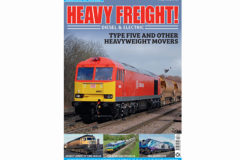Life-long John Deere enthusiast
Posted by Chris Graham on 30th December 2020
Bob Weir meets Jimmy Orr, a life-long John Deere enthusiast with a collection that includes tractors from the 1920s to the ‘60s.
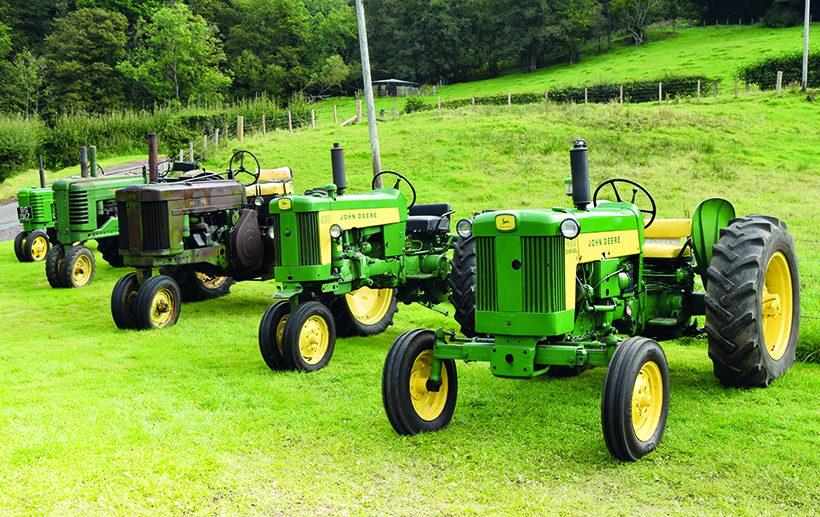
Life-long John Deere enthusiast: A selection of John Deere machinery from Jimmy Orr’s superb collection of .
Jimmy Orr, from the Clyde valley, is a life-long John Deere enthusiast, and he’s been collecting and restoring the green and yellow tractors for many years. His family lives in the countryside just a short distance from Glasgow, in an area that’s well known for its market gardens, and is close to historic Craignethan castle.
His family has owned a nursery for three generations, and he joined the firm as soon as he left school, and has always been a big fan of John Deere. He recalls: “The family owned several tractors, and I soon became familiar with the machines. They kept most of the old tractors, including an old Bristol AF 28 crawler that originally belonged to my great-grandfather.”
The restorations
Jimmy originally cut his restoration teeth on the family’s grey Fergie P3 diesel and International B-250. The first John Deere tractor arrived at the nursery in 1973, and remains in the collection which, today, includes a dozen John Deere tractors. Jimmy lined-up a few of his favourites in the autumn sunshine, for us to enjoy.
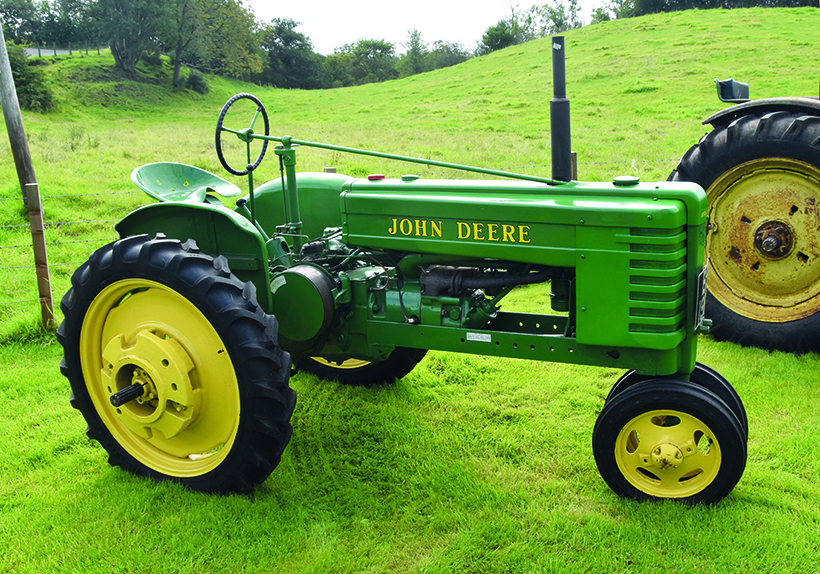
The Model H is quite uncommon in the UK, and Jimmy had to wait several years to acquire his example.
“The 1939 Model H is a relative newcomer, and I’ve had the tractor for a couple of years,” he explained. “This is an early example – they were only made between 1939 and 1947. The row-crop had the traditional, two-cylinder, 1.6-litre engine, with an output of 12hp. I believe this was the smallest tractor John Deere made at its Waterloo factory.
“One thing I like about this Model H is that it’s a genuine import from new, having spent its working life on Orkney in the north of Scotland. It still wears its ‘BA’ Orkney registration plate, and I bought it from an enthusiast in Crianlarich, near Loch Lomond.”
The Model A
Next in the line-up is a 1947 Model A. Introduced in 1934, this was John Deere’s first, true row-crop tractor. The twin-cylinder could run effectively on most types of fuel – a useful selling point during wartime petrol-rationing. The engine’s distinctive sound earned it the nickname ‘Johnny Popper’, and innovative features included an adjustable rear axle, centre line hitch (and PTO), and hydraulic power lift system.
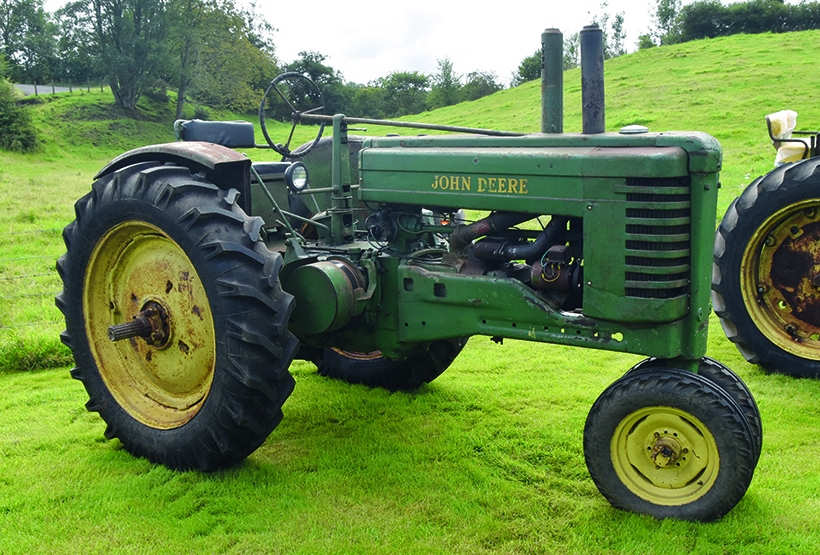
Introduced in 1934, the A Model was a risky venture for John Deere, as America was still recovering from the financial traumas of the Great Depression.
The adjustable wheel treads were popular, and allowed the operator more control. Later tractors were given a new appearance, known as the ‘styled’ look and, in 1940, the engine’s capacity was increased from 309 ci to 321 ci. A pressed-steel frame and uprated gearbox were also introduced, and the model was finally phased out in 1953.
“This later model has the slightly bigger engine,” said Jimmy. “I know nothing about the tractor’s history, but a friend bought it at an auction in England. He’s sold me three John Deere tractors over the years. The A’s tinwork is still in the same condition as when I got it, and I will probably keep it that way. The mechanics needed some maintenance, but it’s now running OK. The tractor is still fitted with its two-gear lever transmission, and is easy to drive.”
The Model 720
Jimmy’s 720 diesel was made in 1957, and is fitted with a petrol, ‘donkey’ engine. “I read somewhere that there’s a bit of a debate about whether John Deere copied the donkey engine idea from Caterpillar but, either way, the system works OK once you get the hang of it,” he said.

Jimmy with his 720; this tractor was part of the six-model 20 Series, featuring more power and yellow paint.
The 720 was part of the two-cylinder 20 series, and was made between 1956 and 1958. The tractor was available in several formats, including petrol, all-fuel, LP gas, standard and high crop. The diesel engine had a capacity of 6.2 litres, and could deliver 53hp driven through an unsynchronised, six forward and one reverse gearbox.
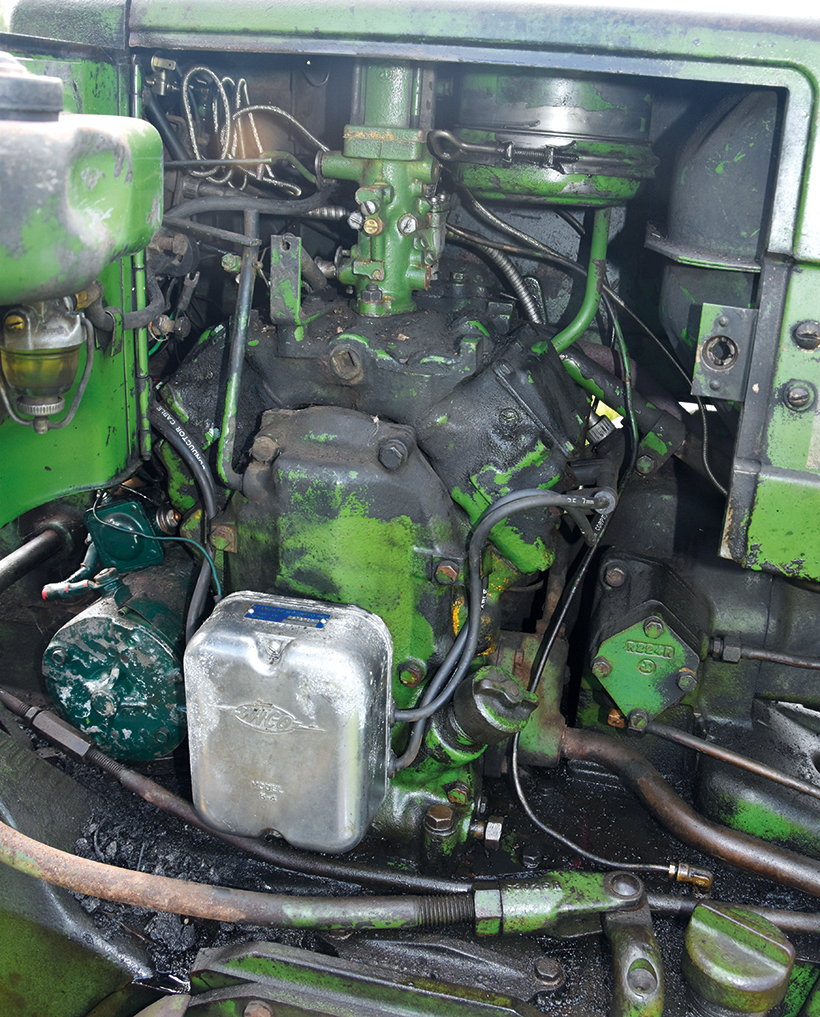
The petrol, V4 ‘donkey’ engine had a displacement of 936cc and ran up to 5,500rpm on starting duties. Its exhaust was positioned to warm-up the diesel engine before starting.
Jimmy added: “Fortunately, the donkey has an electric start. I believe on some tractors and crawlers, you had to pull a rope, which wouldn’t have been much fun on a cold winter’s morning. You obviously must check the oils before you start the donkey, and make sure that the tractor isn’t in gear. Provided the weather isn’t too cold, the diesel will usually start first time. The tractor spent its early life in America, and was shipped across in the past couple of years.”
The Model 435
Jimmy’s 1959 type 435 was only in production between 1959-60, and less than 5,000 examples are believed to have been built. The tractor was the first John Deere introduced after the new PTO standards were adopted in 1958. This meant it was also the first of the company’s machines to have its horsepower rated in terms of PTO, after Nebraska dropped the belt test the following year.
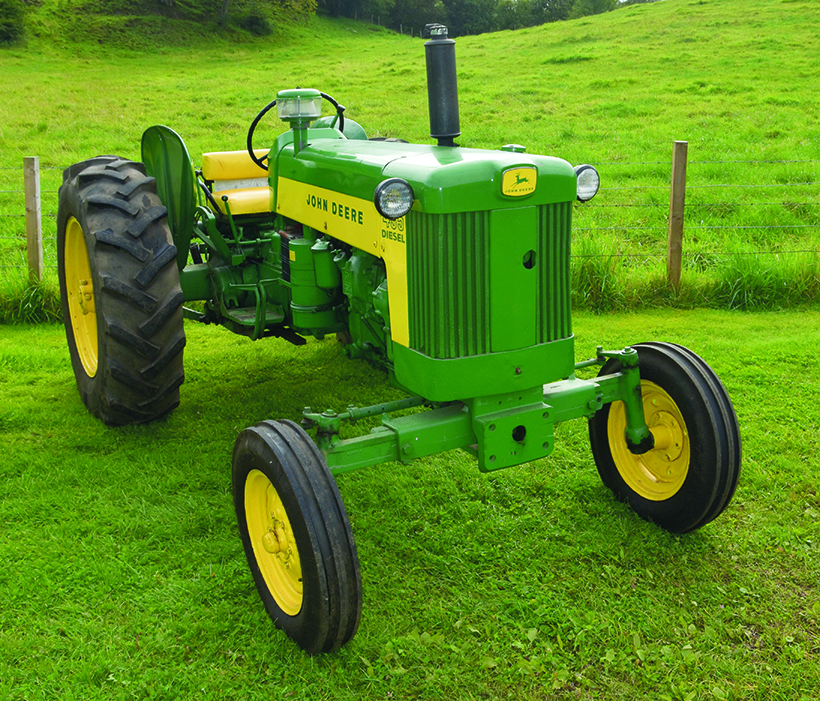
The 435 was only in production for a short period, and was very much a stopgap model for John Deere.
Most John Deere tractors used in-house engines, but the 435 is unusual because it was fitted with a General Motors 2-53, 1.7-litre, two-cylinder supercharged diesel engine as a short-term expedient. The unit had a bore/stroke of 3.875×4.50in, with a rated speed of 1,850rpm. The tractor was also equipped with a four-speed (plus reverse) gearbox.
“I bought the tractor from George Wisener in Ayrshire,” Jimmy explained. “George is used to importing tractors from America, and said the 435 was only introduced as a temporary measure alongside the more popular Model 430, which was powered by a John Deere petrol engine. Apparently, the company didn’t like using engines from other suppliers, which is why the model only remained in production for a year.”
Despite the tractor’s rarity, Jimmy says the 435 is fun to drive. “It makes a racket, and you can usually hear it coming a mile away,” he said. “I’ve been told there are only a couple of examples in the UK, and I’ve never seen one at a rally.”
The Model 430
The final tractor in Jimmy’s line-up is a Model 430. The 30 Series was the last of the Johnny Poppers, and was introduced in 1958. It was the second smallest in what was a six-tractor series, and its two-cylinder engine could deliver 28hp. The series got upgraded power ratings and a host of features benefitting comfort and ease of use.
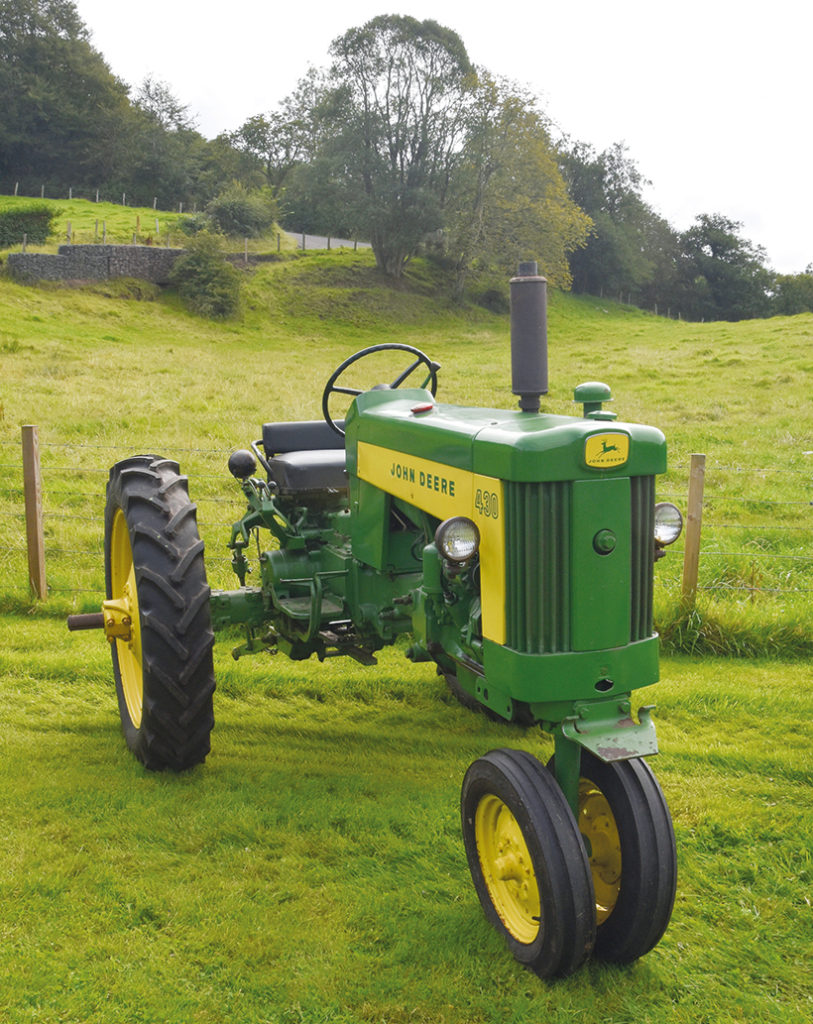
The workmanlike 430 was available in several variants, including 430T (tricycle); 430S (standard) 430U (utility) 430H (high-crop); 430V (special); 430W (row-crop utility) and 430C (crawler).
“My 1959 tractor was bought by an enthusiast at an auction in Cambridge,” Jimmy recalls. “The ‘Touch-O-Matic’ hydraulic control system mounted in front of the seat enabled the operator to raise, lower and adjust implement depth with a one-touch control.”
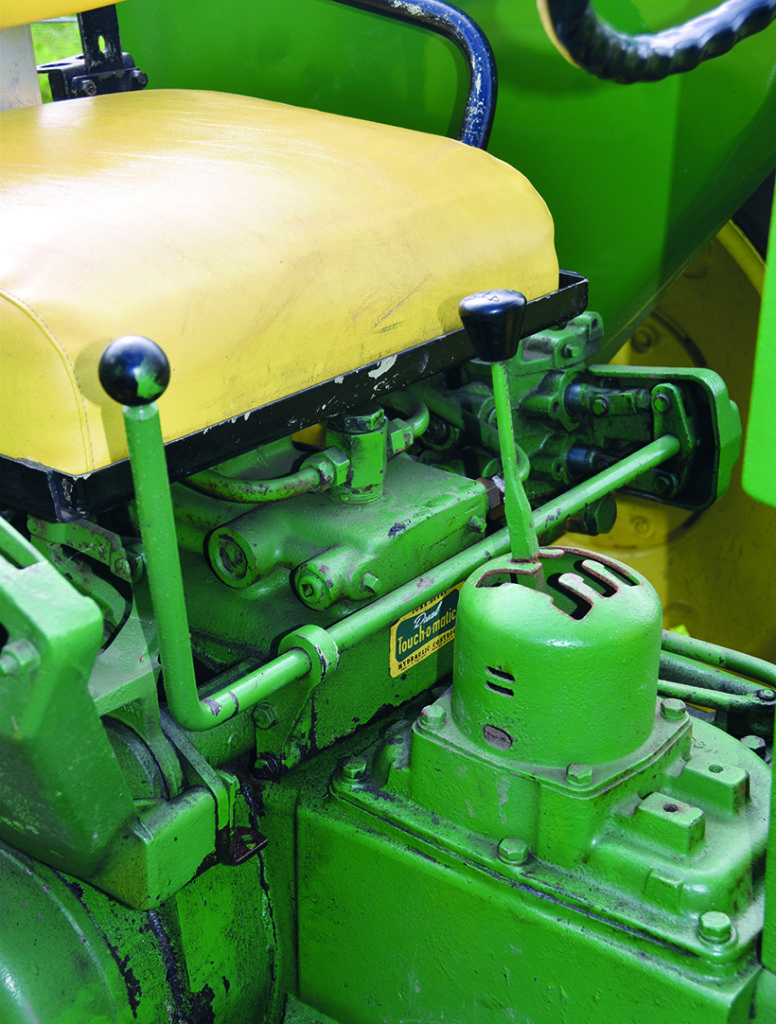
The dual ‘Touch-O-Matic’ system was John Deere’s latest hydraulic control. The one-person ‘Quik-Tatch’ implements system provided fast, efficient hitching that rivalled the three-point hitch.
Jimmy’s collection also includes a pair of Model Ds, which were tucked safely away in a shed. This model was a big success, and established John Deere as a mainstream tractor producer. Over 160,000 examples had been sold by the time the model was phased out, in 1953. It was popular both for ploughing and threshing. Engine power was steadily improved from 27hp to 42hp, and a third transmission speed was added in 1935. The later-styled version, introduced in 1939, was particularly popular, especially with the optional pneumatic tyres.
The styled D
“My 1945 styled Model D came from a dealer in Melton Mowbray, Leicestershire, and I bought it in 2001,” he explained. “The tractor is fitted with an electric starter. I’d been looking for this model for some time, and spotted a tractor for sale in Tractor & Farming Heritage magazine. It had been packed away in boxes, but I soon had it re-assembled and in working order.”
Jimmy is an accomplished mechanic and does most of the restoration work himself. He also has a part-time hobby refurbishing tractor magnetos.
“I’ve refurbished most of my tractors to a reasonable standard,” said Jimmy, who is a member of the Avon Valley Vintage Power Club. “However, I’ve stopped short of restoring them to concours condition. They are working machines at the end of the day, and I want to enjoy them all without fear of scratching them. I certainly don’t want to have to put on a pair of slippers every time I take one out for a spin!
“I try to keep my restorations as original as possible. Getting parts can be an issue, and you need to contact American suppliers. I’ve also used the Old 20 Parts Co. a lot because it has connections with John Deere specialists, Steiner Tractor Parts, over in Michigan. They also supply the paint, including primers, undercoat and topcoat.”
Work in progress
Unfortunately, the refurbishment of Jimmy’s second Model D is still a work in progress. “I bought the 1929 tractor from friend and enthusiast, Stuart Robb,” he explained. “The machine still needs a fair amount of work, which is why it isn’t on display.
“Ironically, I came across the machine purely by accident. I had gone to Stuart’s place with a friend who wanted to check out a Trantor. I immediately spotted the Model D, and it was love at first sight. I wanted the machine as it’s an early, ‘unstyled’ example. Unfortunately, the tractor’s condition left a lot to be desired. The radiator needs repairing, and the fuel system – including the fuel tank – needs to be fixed. I also need to track down an original magneto.”
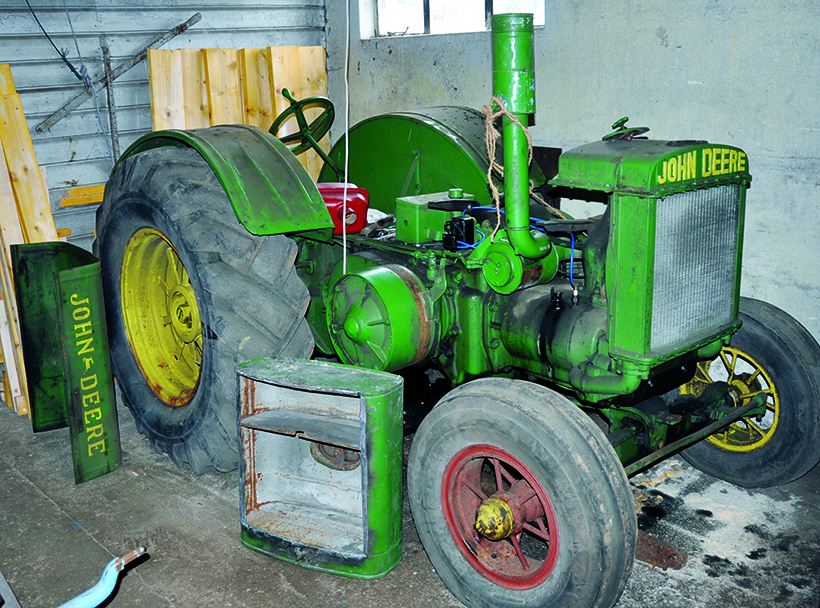
Jimmy’s Model D (unstyled) is still a work in progress.
“I’m always on the look-out for the older John Deere tractors,” he said. “I’ve learned to be patient over the years because it’s important to get a tractor at the right price. If you are prepared to do your research, the right machine will eventually come along.”
For a money-saving subscription to Tractor & Farming Heritage magazine, simply click here




